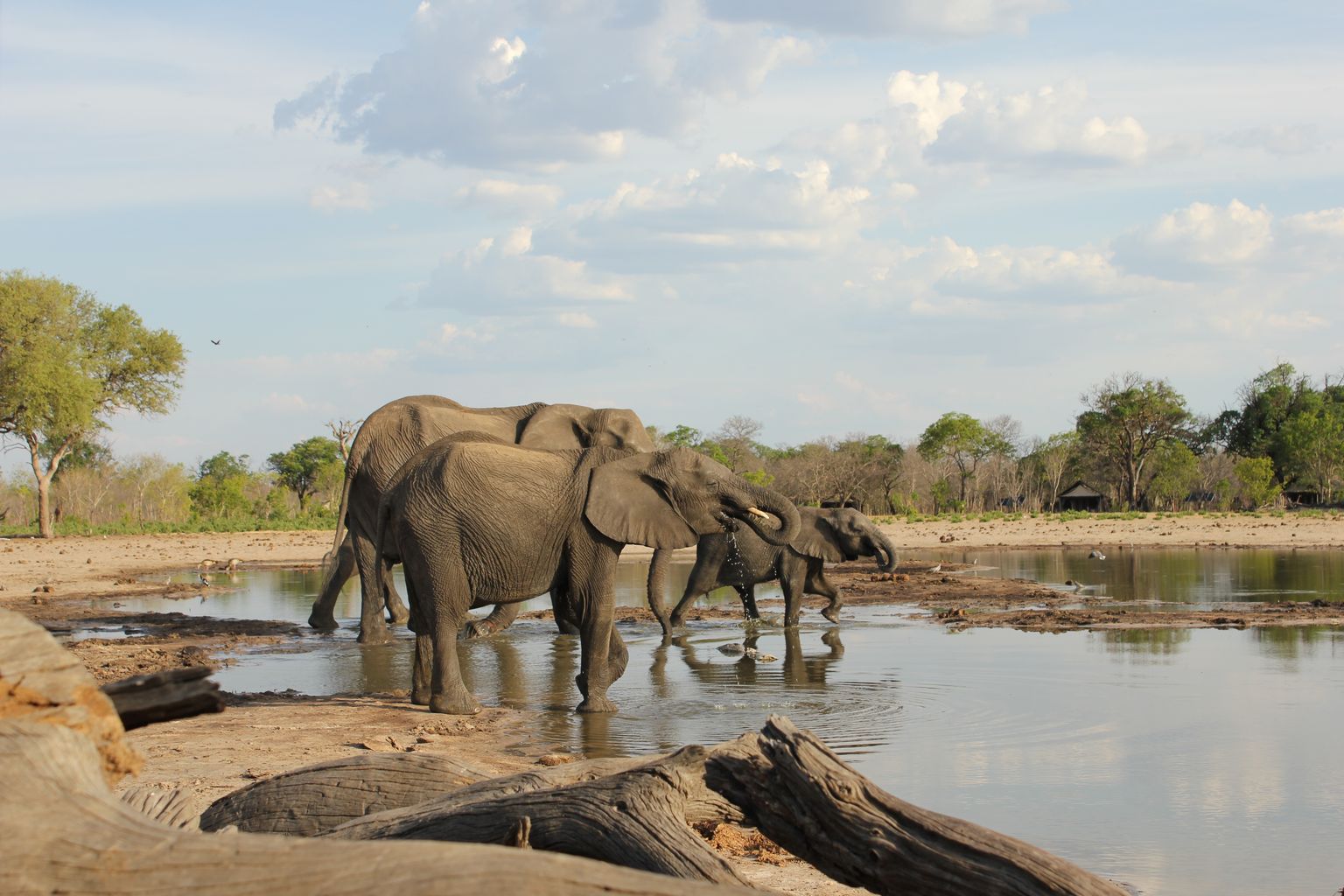An Essential Safari Glossary

When I first started planning my trip to Zimbabwe and Botswana, I heard a jumble of seemingly familiar phrases that clearly carried unfamiliar meanings; many sounded more like code for movie stunting or grocery shopping than safari planning. Here’s a quick guide to these essential terms that will help you decide which safari season, type, and style might be right for your wildlife adventure:
Green season
Yes, everything that they say about baby animals in Africa’s springtime is true. It’s not enough to see a majestic elephant, with its jumble of ridiculous ears and impeccable grace; the tiny ones, so adorably fascinated with the green season splash of water and mud, will steal your heart. You might just catch a glimpse of baby before the herd surrounds it in a protective wall. Or you might spot an extra pair of tiny, skinny legs mirrored behind an adult zebra. In green season, even the most reclusive of beasts are drawn slowly out into the burgeoning lushness — which of course, is a delight to the predators. They all mix through the contours of the colorful waterways, the flowering brush, and the campside.
Green season starts in November and December and runs through the US early summer. Daytime temperatures should be avoided with naps or plunge pools, but morning and evening temperatures are just right for activities. As a further bonus, seasonal costs are lower and crowds are smaller.
High season
This is when the stark winter renders the landscape free of hiding spots. The daytime temperatures are milder and malaria risks are lower. The variety of activities beckons: Better visibility means an opportunity for guided walks, while fishing season is also at its peak. At the Okavango Delta, the water levels rise up to the edges of the raised walkways and the landscape is utterly transformed. Boat rides carry you through the extensive channels, some recently forged by determined hippos who pave the way for all other forms of large transport.
In high season a safari can be combined with other highlights such as the sardine run on South Africa’s Wild Coast or the whale migration along the coast. Note that the Cape Town coast at this time enjoys its own contrarian green season since its winter brings rain and the flower season of the famous fynbos. Victoria Falls runs with such explosive force that on some days, the falls can only be seen as a mist.
In East Africa, this is the season of the Great Migration, that exhilarating time when more than two million animals – including some 200,000 zebra, 500,000 Thomson’s gazelle, and one-and-a-half million wildebeest — cross the Serengeti-Mara ecosystem. This sight is one of the natural world’s most unforgettable spectacles.
Classic camp
In theory, this southern Africa term denotes the more basic option for a camp style. Expect to serve your own meals in a buffet-style setting. En-suite amenities are basic: Don’t expect a hair dryer, minibar fridge, or masseuse on site. At any camp, you’ll be expected to share dining tables, plunge pools, and Land Rovers with other guests — a great way to meet like-minded adventurers.
Premier camp
This term, also unique to southern Africa, denotes a camp where everything is a touch more upscale. The meals are three-course events based on a short menu, plated and served in dining style. En-suite amenities are more indulgent and the facilities might include a gym, spa, and other levels of service. Laundry services involve more options. Essentially, you can expect more special touches and more available options at these camps.
Land camp
The terrain on these sprawling concessions, often in parks the size of most states or even some countries, can change dramatically from patches of adrenaline grass to forests of elephant-chomped acacia trees. Watering holes might draw the most flagrant mix of species to the most compact space, and it’s common for a “hide” to be constructed just a few feet from the spot. The primary activity at these camps is the game drive; if you want to avoid boats entirely, this is your best option. This is also the best choice if you’re looking to rapidly tick off species on your wildlife checklist.
Water camp
These concessions may be next to a single river or a network of waterways. Boat rides might take you through the delta, canoes might carry you down a river, traditional mokoro canoes may lull you along the lily-strewn lagoons. Catch-and-release fishing can be arranged at many camps. Be prepared to learn more than you wanted about how long hippos can hold their breath. This is the best choice if you’d like to try out a wider variety of safari activities.
Once you’ve mastered these essentials, here are seven other safari terms that are good to know
Japanese impala: Used in East Africa, this phrase refers to the two-stroke Honda motorbike that is often seen sprinting through the Masai Mara.
Just now: This wonderfully flexible time reference, ubiquitous in southern Africa, can mean anything from “within seconds” to “within the next several years.”
Karibu: This East African greeting is a ubiquitous and very laid-back term for “Welcome!”
MacDonalds of the bush: Every guide you meet will make this reference at least once upon spotting an impala. Try to keep laughing at it.
Smalls: This discreet noun is a code word for underwear, which – please note – it is absolutely not okay to leave in laundry at classic camps. Smalls will be handled – separately– at most premier camps. Both camp types provide self-service laundry soap.
Sundowner: This is the cocktail of choice to sip while watching the sunset gild the savannah. Exquisite!
And finally, ABF: The Absolutely Bloody Final drink of the night. (Right!)

